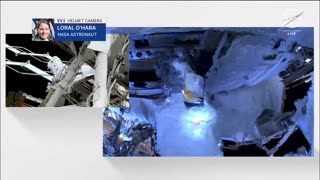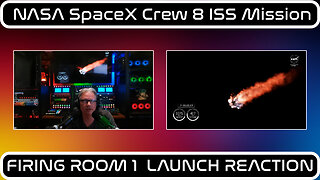Stepping Out for a Spacewalk at the Space Station on This Week NASA
Stepping out for a spacewalk at the International Space Station (ISS) is a complex and highly choreographed operation that allows astronauts to work outside the station in the vacuum of space. Spacewalks, also known as Extravehicular Activities (EVAs), are conducted for various reasons, including maintenance, repairs, experiments, and the installation of new equipment. Here's an overview of what it's like to step out for a spacewalk at the ISS:
1. Preparation: Spacewalks require careful planning and preparation. Astronauts must undergo extensive training in a large swimming pool called the Neutral Buoyancy Laboratory, where they practice working in a spacesuit that simulates the weightlessness of space. They also receive extensive training on the procedures, equipment, and tools they will use during the spacewalk.
2. Spacesuit: Astronauts wear specially designed spacesuits, known as Extravehicular Mobility Units (EMUs), which provide life support, temperature regulation, and protection from the harsh conditions of space. The spacesuit is equipped with a visor to protect their eyes from the intense sunlight and micrometeoroid impacts.
3. Airlock: Astronauts exit the ISS through an airlock, a small compartment with two hatches that acts as an interface between the inside of the station and the vacuum of space. They wear their spacesuits inside the airlock to depressurize before going out.
4. Safety Tethers: Astronauts are connected to the station via safety tethers and handrails, ensuring they remain tethered and do not drift away. These tethers are crucial for preventing astronauts from becoming untethered in the microgravity environment of space.
5. Tools and Equipment: Astronauts carry a variety of specialized tools and equipment to perform their tasks. These may include drills, wrenches, cameras, and other instruments needed for specific activities.
6. Tasks: During the spacewalk, astronauts may perform a wide range of tasks, including repairing or replacing equipment, conducting experiments, and upgrading the station's systems. They communicate with the ground control center and their fellow astronauts inside the station to coordinate their activities.
7. Limited Time: Spacewalks are physically demanding and astronauts have a limited supply of oxygen and battery power in their spacesuits. Typically, spacewalks last around 6-7 hours, but they can be extended if necessary. Astronauts need to manage their resources carefully to ensure a safe return to the station.
8. Reentry: When the spacewalk is complete, astronauts re-enter the airlock, repressurize it, and remove their spacesuits. They must go through a meticulous decontamination process to prevent any contaminants from being brought back inside the station.
Spacewalks at the ISS are remarkable feats of engineering and human endurance. They are essential for the maintenance and continued operation of the space station and provide valuable insights into the challenges of working in the extreme environment of space.
-
 2:13
2:13
SpaceHarbor
4 months agoExploring the Secrets of Space: "Journey with NASA through the International Space Station"
33 -
 1:38
1:38
Outer Space
1 month agoHow to Sleep on the International Space Station - ISS
2982 -
 40:12
40:12
The Sara Carter Show
1 month agoEXCLUSIVE: How Space Exploration Could Cure Disease And Change Our Lives
2.62K6 -
 4:28
4:28
Outer Space
3 months agoLife on the International Space Station
1063 -
 9:08:10
9:08:10
Flight Risk News
6 months agoSpacewalk with Astronauts Jasmin Moghbeli and Loral O'Hara Nov 1, 2023 Official NASA Broadcast
15 -
 7:02
7:02
Outer Space
2 months agoSTS-61C 24th Space Shuttle Launch & Landing Jan 12, 1986
5152 -
 5:27
5:27
Outer Space
3 months agoSTS-41C: 11th Space Shuttle Launch and Landing April 1984
179 -
 18:43
18:43
Firing Room 1
2 months agoNASA SpaceX Crew 8 Mission to ISS Launch Reaction
13 -
 4:14
4:14
Outer Space
3 months agoSTS-51D 16th Space Shuttle Launch & Landing (4-12-85)
518 -
 6:12
6:12
Outer Space
3 months agoSTS-9, 9th Space Shuttle Launch And Landing November 28, 1983
105